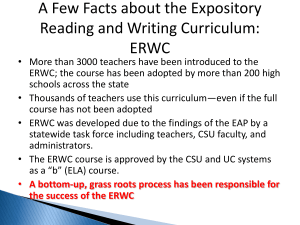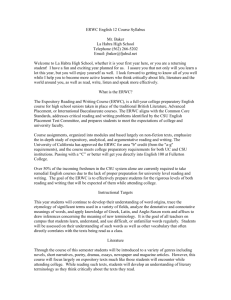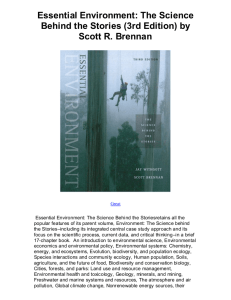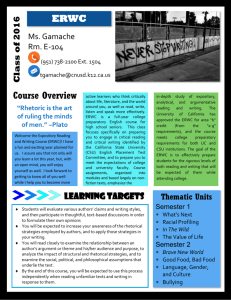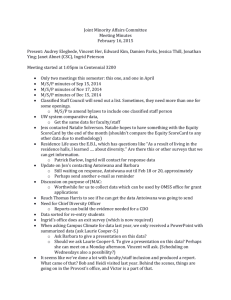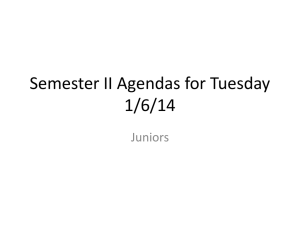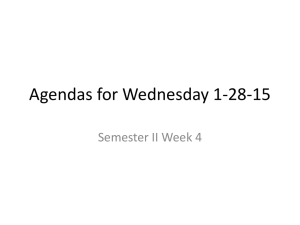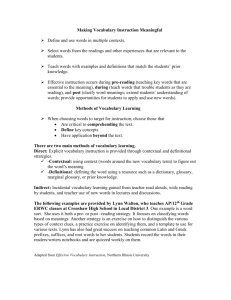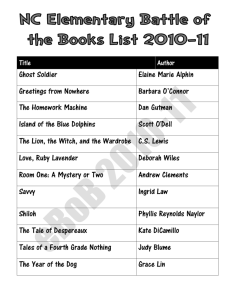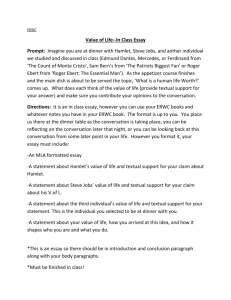What It Takes to Be Great Ingrid Brennan
advertisement
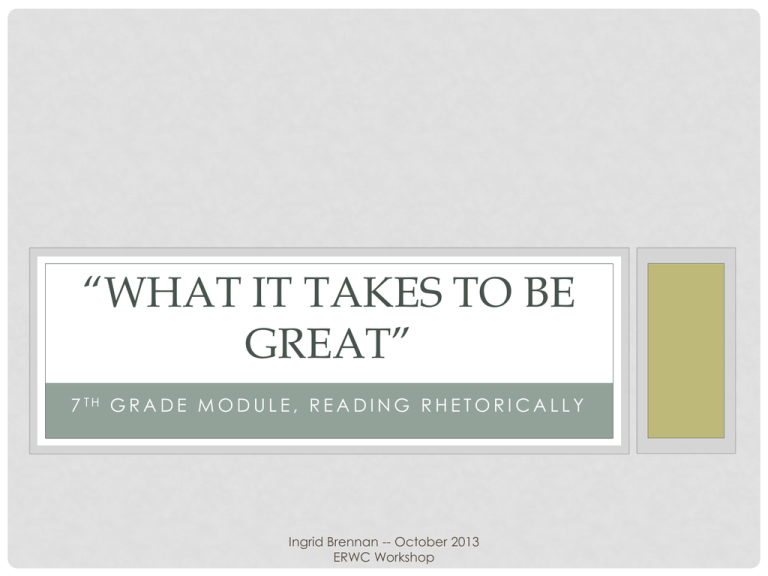
“WHAT IT TAKES TO BE GREAT” 7 TH G R A D E M O D U L E , R E A D I N G R H E T O R I C A L L Y Ingrid Brennan -- October 2013 ERWC Workshop MODULE OVERVIEW • Designed to be the first module of the 7th grade year. • Focus is on building student proficiency in accurately and effectively “listening to” a text. • Uses a single magazine article about improving performance through practice. • Culminates in two major assignments – a summary of the article and a speech in which students give specific advice about improving a specific performance. • Assumes that students will collect their work throughout the module and use that work to facilitate the two culminating assignments. Ingrid Brennan -- October 2013 ERWC Workshop PREREADING • Prereading activities are designed to get students to: • • • • • access prior knowledge. explore key concepts. preview the text and make predictions. acquaint themselves with important vocabulary. establish a framework for understanding the text. • As you complete these activities as “students”, think about how they would work in your classroom. What scaffolding might you need? What would you add to increase the challenge? Ingrid Brennan -- October 2013 ERWC Workshop ACTIVITY 4: EXPLORING KEY CONCEPTS • Working with a partner, complete the key concept chart. • Now, compare with two other groups. Explain your grouping decisions to each other, even if your answers are the same. Ingrid Brennan -- October 2013 ERWC Workshop READING • Reading activities lead students through multiple readings of each text. • Generally speaking, students are guided to read “with the grain” the first time and then “against the grain” thereafter. • In this foundational module, students are solely guided in reading “with the grain”. • Reading activities help students: • • • • • comprehend the text(s). acquire vocabulary. analyze content/argument. identify aspects of writing style. recognize structure. Ingrid Brennan -- October 2013 ERWC Workshop ACTIVITY 11: CONSIDERING THE STRUCTURE OF THE TEXT • Now that you have read Colvin’s “What It Takes to Be Great”, go back and reread it. • Using a highlighter or pencil, mark and label the following on the article itself: • Where you think the article’s introduction ends • Where Colvin notes the question researchers wanted to answer (the problem they wanted to solve) by studying great performers • Where Colvin shares the researchers’ findings/conclusions • The “elite performers” Colvin includes as evidence • Where you think the article’s conclusion begins • Then, exchange your copy with a partner and compare/contrast your labeling. Go back and make any changes to your markings. Ingrid Brennan -- October 2013 ERWC Workshop POSTREADING • Postreading activities are designed to guide students through a critical analysis of the text(s) by asking them to: • think critically. • identify strengths and weaknesses in the text. • recognize arguments and counterarguments, or the lack thereof. • formulate their own opinions. • Generally, these assignments take students through the process of reading “against the grain.” • For this foundational module, students are instead being asked to build their proficiency in listening to the text. Deeper critical reading will come in later modules. Ingrid Brennan -- October 2013 ERWC Workshop ACTIVITY 13: THINKING CRITICALLY • You will now be divided into three groups. Work with your group to answer your assigned questions. If you finish early, answer some of the other questions. Be prepared to share your answers with the class. • As groups share their answers, write down their responses on your own handout. These questions and answers should go into your folder with the other work you are doing with Colvin’s article. Ingrid Brennan -- October 2013 ERWC Workshop REFLECTING • Looking back on your experience with the sample Prereading, Reading, and Postreading activities, and considering your own students, spend some time individually or in groups answering the following questions. • How would these types of activities help your students? • How would these types of activities present your students with challenges – logistically, academically, behaviorally? • How would you have to provide extra scaffolding for some students/classes? • How would you have to increase rigor for some students/classes? Ingrid Brennan -- October 2013 ERWC Workshop
